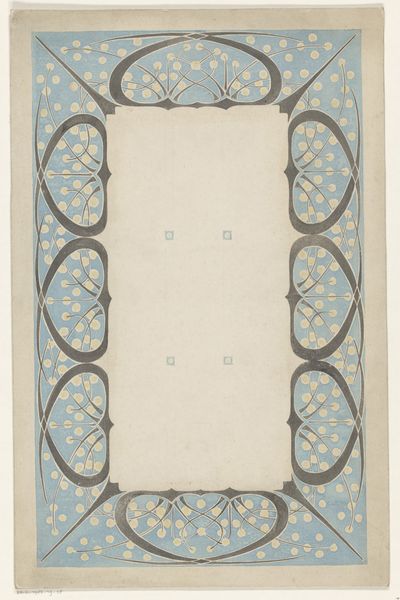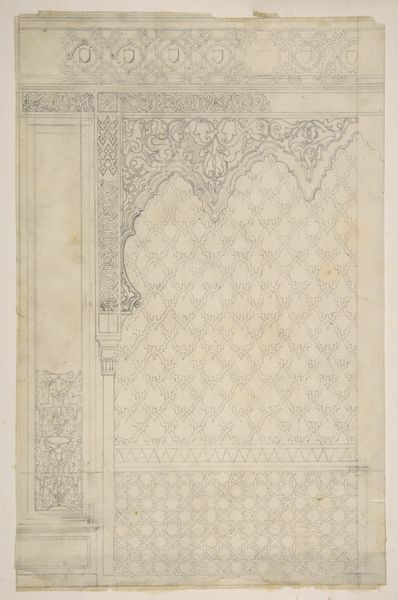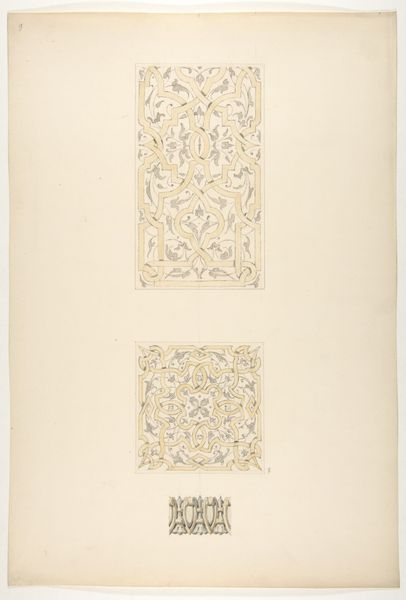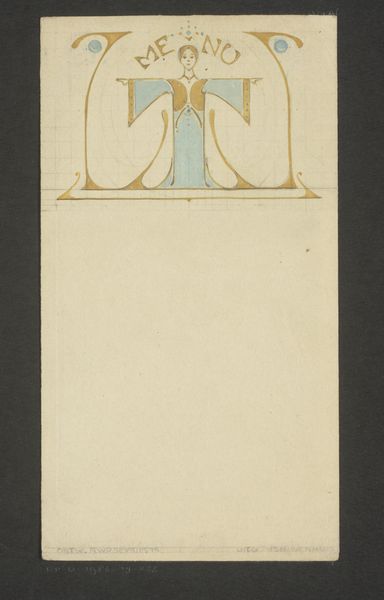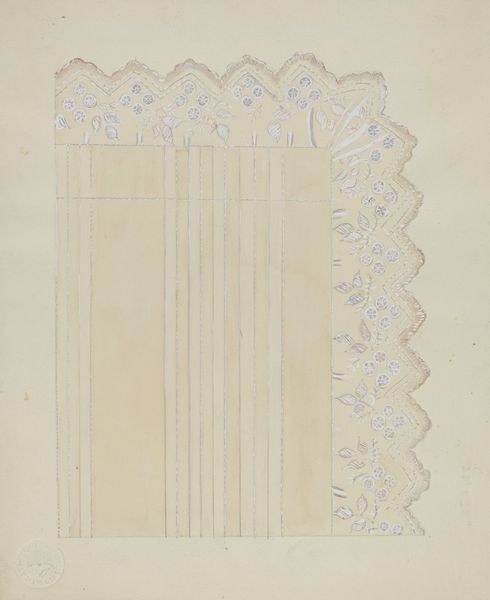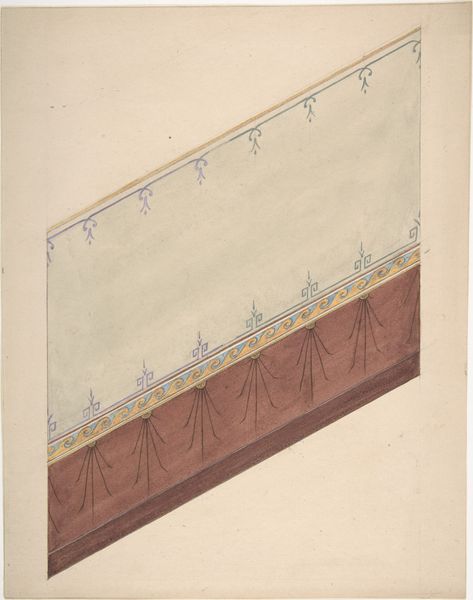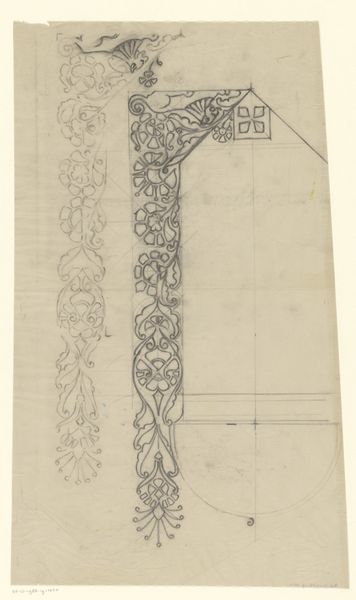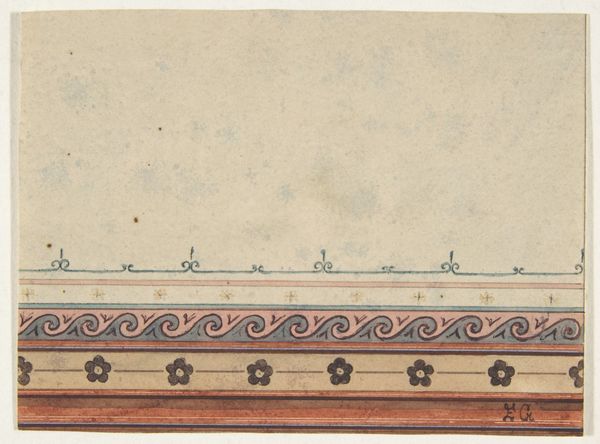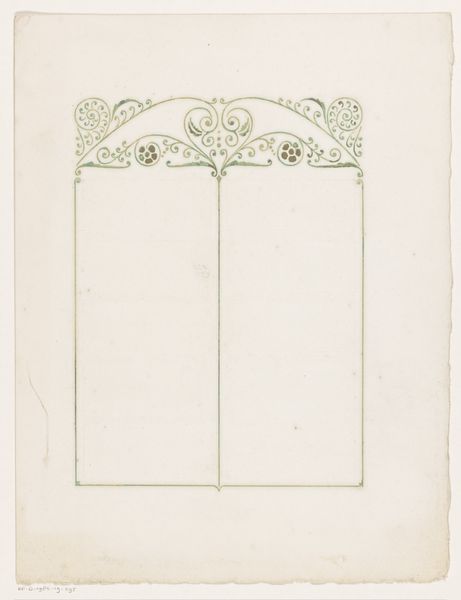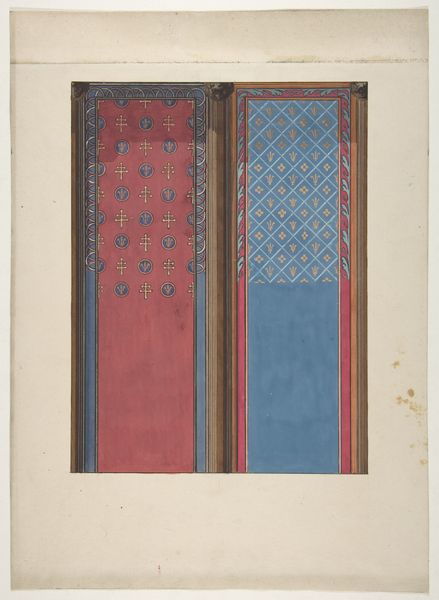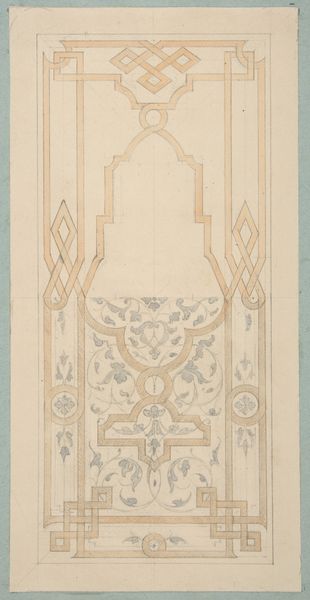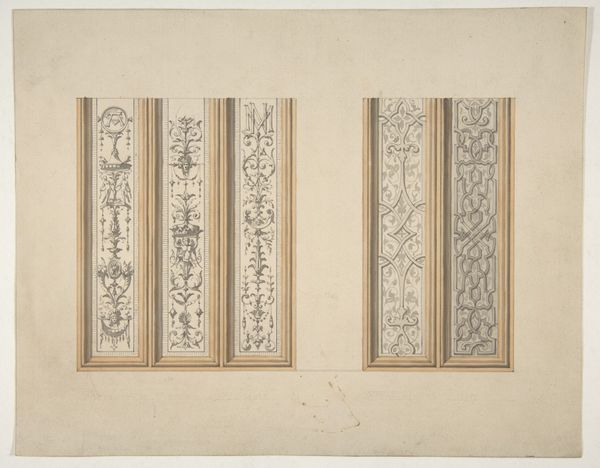
drawing, paper, ink
#
drawing
#
art-nouveau
#
paper
#
ink
#
geometric
#
line
Dimensions: height 647 mm, width 450 mm
Copyright: Rijks Museum: Open Domain
Editor: This ink and paper drawing by Theo Nieuwenhuis, “Ontwerp voor een kalender (?), met vlinders”, or "Design for a calendar (?) with butterflies", from possibly 1911 to 1918, has such a clean, almost sterile feel, despite the Art Nouveau butterfly motifs. It feels very regulated. How do you interpret this work? Curator: This piece strikes me as a fascinating example of the tension inherent in the Art Nouveau movement itself. On one hand, we see the embrace of nature through the butterfly imagery. But the rigid lines and geometric divisions suggest a desire to contain and control that very natural world. This impulse toward order could be seen as a reflection of the era's anxieties around rapid industrialization and societal change. The artist both idealizes and subjugates nature, revealing conflicted ideals in modern societies. Editor: That makes me think about how women were often portrayed during that time as being both beautiful and decorative, like the butterflies, but also constrained by societal expectations and gender roles. Curator: Precisely. The Art Nouveau style, while seemingly liberating in its flowing forms, could also reinforce existing power structures. Think about how advertising and design were just beginning to take off at this time. Whose stories are being told, and for what purposes? Are these designs serving to uplift, or merely to sell? Nieuwenhuis, creating for industry, shows us this dichotomy beautifully. Editor: So by placing the butterflies in such a structured format, is Nieuwenhuis commenting on the way nature and women were being used? Curator: It's a question worth considering. We have to also wonder about his position within society. Was he an advocate for changing norms, or an active participant in them? Regardless, these visual metaphors can really spark a conversation about identity and purpose. Editor: That’s given me a completely different perspective on the drawing; I was so focused on the geometric quality, but you are right, it's way more complex when looking at historical gender dynamics. Curator: It's often in those tensions and contradictions that we find the most revealing insights into ourselves and our world.
Comments
No comments
Be the first to comment and join the conversation on the ultimate creative platform.
